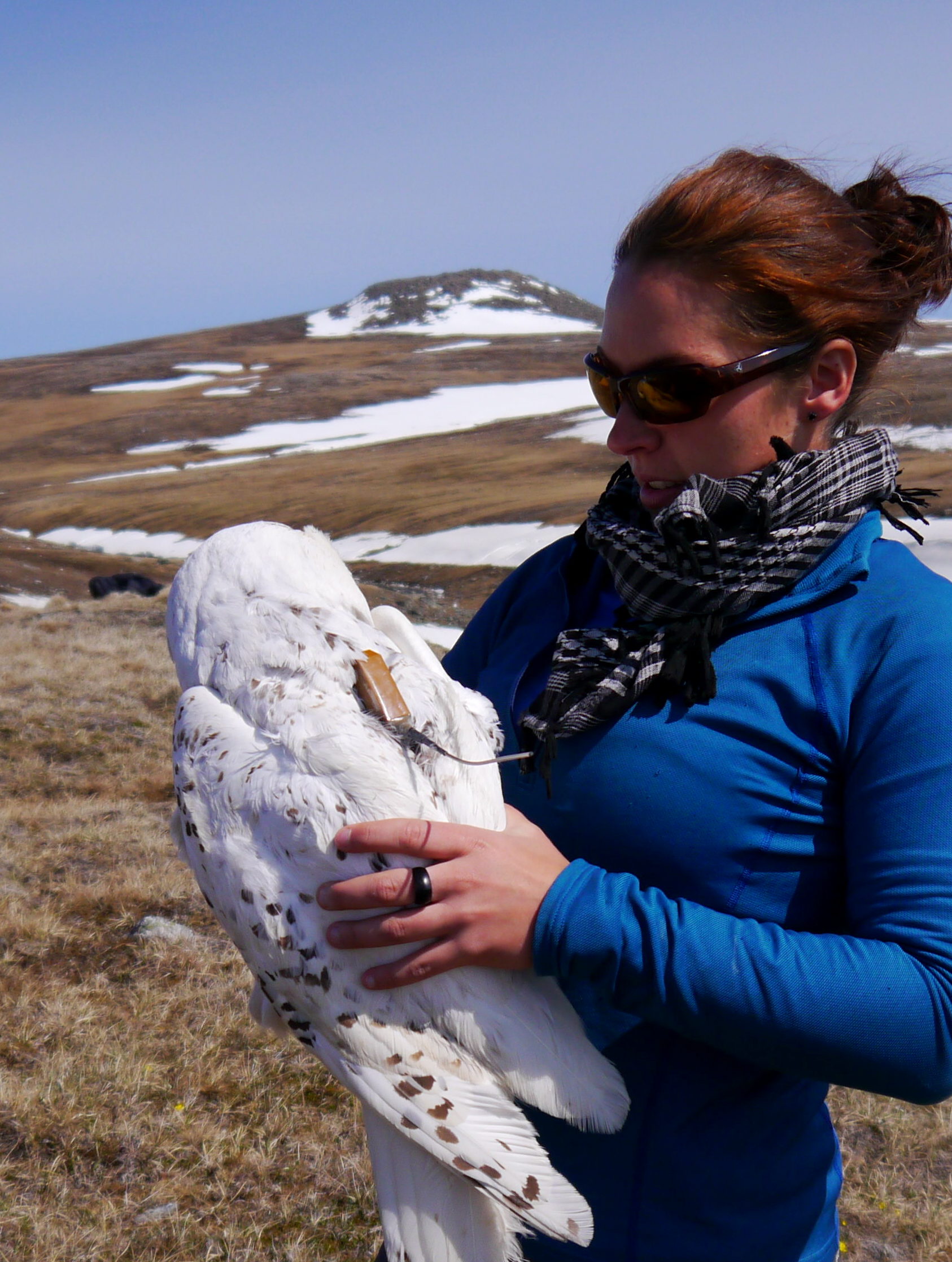← Back
Where snowy owls are wintering?

Snowy owls are large birds living North of America and Eurasia, with white / spotted white feathers. They are migrant birds, but in an unpredictable way – they can winter as south as the American Midwest, as well as in the Artic circle.
The snowy owl (Bubo scandiacus) is one of the major Arctic top predators, and a highly nomadic species. Contrary to other owls, it lives by day as well as night (it should be noted that nights are short or non-existent in summer close to Arctic, anyway). It is a large bird, spending the summers on a diet mostly composed of lemmings or other rodents. On winter, though, they have a broader diet, and different habitat uses have been noticed. For a long time, we haven’t known whether those were individual behaviors, with different individuals showing fidelity to the same wintering site or if they could change their wintering habitat from year to year.
To explore this question, The University of Laval (Québec, Canada) tracked 21 females by satellite telemetry using Argos PTTs between 2007 and 2016, to describe the behavior of wintering snowy owls breeding in eastern Canada and to examine factors affecting their wintering behavior. Complementary data, such as snow depth, small mammal abundance were also analyzed with the owls’ paths.
These 21 tracked owls allowed to record 42 complete wintering periods, 25 of which were spent predominantly inland (16 in the Arctic, 9 in temperate areas) and 17 in the marine environment (15 in the Arctic, 2 in temperate areas). Most individuals that were tracked for two consecutive years used the same wintering environment among inland or marine and also stayed at around the same latitude (16 out of 21), but not always the exact same area. This change could be linked with variation in food availability. Annual variations in sea ice dynamics may change the spatial distribution of seabirds and could explain the moderate site fidelity shown by snowy owls in the marine environment. There are evidences that lemming densities on Bylot Island affected some aspects of habitat use by wintering owls (no data elsewhere).
The snowy owls’ consistency in wintering environment and latitude may provide them with advantages in terms of experience while their mobility and flexibility on the precise site may help them to cope with changing environmental conditions.
References
Audrey Robillard, Gilles Gauthier, Jean-François Therrien and Joël Bêty, 2018: Wintering space use and site fidelity in a nomadic species, the snowy owl, Journal of avian biology, e01707, doi: 10.1111/jav.01707
Photo U. Laval, a snowy owl on Bylot Island.
Links:
Ecological studies and environmental monitoring at Bylot island Sirmilik National Park

